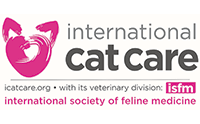
A new publication by biologist Xuhua Xia of the University of Ottawa is the latest in a string of theories put forward by scientists investigating the origin of SARS-CoV-2. This theory proposes the intestines of dogs could have provided a place for evolution of the ancestor of SARS-CoV-2 into a ‘fully ready’ virus capable of the current COVID-19 pandemic. However, this theory relies solely on inference from virus genome structures and there is no actual evidence of dogs as the origin, or that dogs are playing any role in current virus transmission. COVID-19 is a disease spread from person to person and this publication does not change that.
ICAM emphasises that this is not evidence of SARS-CoV-2 transmission risk from stray dogs to people and in no way justifies stray dog removal or culling.
Xia himself states that such measures “commits unjustified brutality against these dogs.”
ICAM again strongly urges everyone, particularly global media outlets to exercise caution; to be responsible and not use alarmist headlines whilst reporting and sharing information on this issue.
Xia has mourned the “many misunderstandings in news articles with misleading titles that distorted what I said in the paper.”
Xia makes several leaps and assumptions in developing his theory about dogs and he, and many other scientists, have proposed other competing hypotheses. In the absence of any real world data this current theory regarding dogs should be treated with extreme caution.
Indeed, where actual samples have been collected from dogs and cats, SARS-CoV-2 is overwhelmingly not being found. IDEXX Laboratories has evaluated thousands of samples, in the US, South Korea, Canada and Europe, including areas with high rates of COVID-19 in people, and have seen no positive results. A study of pets in close contact with COVID-19 patients in France also reported all negative results when testing for virus infection (Temmam et al 2020). Although two dogs in Hong Kong were found to be positive, the presence of the virus was only ‘weak-positive’ and transient before tests returned negative results; being infected does not mean an animal is infectious, that requires a sufficient amount of live virus in tissues that are open to contact. Furthermore, many other dogs and cats tested in Hong Kong all returned negative results.
For pet owners and people living in communities with stray dogs, this publication needs to be put in perspective when considering current risk. Xia notes that the original “zoonotic (a disease shared between animals and people) transmission must have been a very rare event”. It’s extremely likely that this happened only once and since then the transmission has been entirely person to person. Animals are not part of the current transmission risk to people.
Our advice remains to simply avoid close contact and practice good hygiene with pets, especially if you have symptoms of COVID-19. These precautionary measures will keep your pets safe from the virus.
Xia’s theory specifically talks about feral dogs. He describes SARS-CoV-2 appearing in people as a ‘fully ready’ virus without preceding outbreaks of a ‘nearly ready’ virus. So he describes “either the species carrying SARS-CoV-2 is very rare, or extremely few individuals in the species carry SARS-CoV-2, or the carry species is well isolated from human populations”. Combining his claim of dogs as the likely mammalian intestinal host in which viral evolution could take place, with this need for isolation from humans for several years, he targets feral dogs. However this exposes a lack of understanding of dog population dynamics. Dogs are a domesticated species that have evolved alongside people. As a species, they are now entirely useless at sustaining their populations without human support; their mortality is extremely high and their breeding success extremely low.
The populations of stray dogs that we see across much of the developing world are not feral; these are owned dogs allowed to roam, abandoned owned dogs or community dogs without a single referral household but still benefiting from care provided by people. Importantly, these surviving stray dog populations are not isolated from people, those that do become isolated from human support do not survive for long at all. Hence isolated feral dogs are a poor candidate for an intestinal host in which the ancestor of SARS-CoV-2 could have evolved, simply because these populations do not persist.
The host that is finally identified as the origin of SARS-CoV-2 is far more likely to be a truly wild animal that can survive and breed for several years isolated from people, before the virus made its zoonotic transmission into people. From that point forwards this became a human disease and that is where our transmission risk lowering policies should focus, with people not dogs or cats.
About International Companion Animal Management (ICAM) Coalition
ICAM supports the development and use of humane and effective companion animal population management worldwide. The coalition was formed in 2006 as a forum for discussion on global dog and cat management issues.
Our key goals are to:
- Share ideas and data
- Discuss issues relevant to population management and welfare
- Agree definitions and hence improve understanding
- Provide guidance as a collegial and cohesive group
Contact information: info@icam-coalition.org
Twitter: @ICAMCoalition











